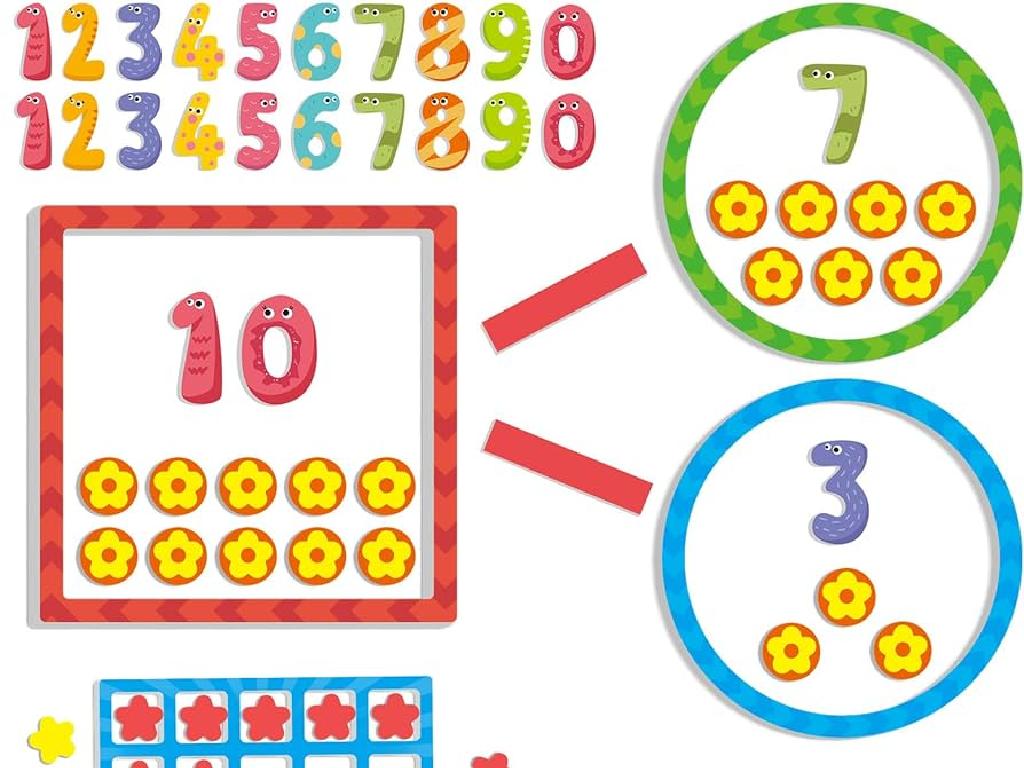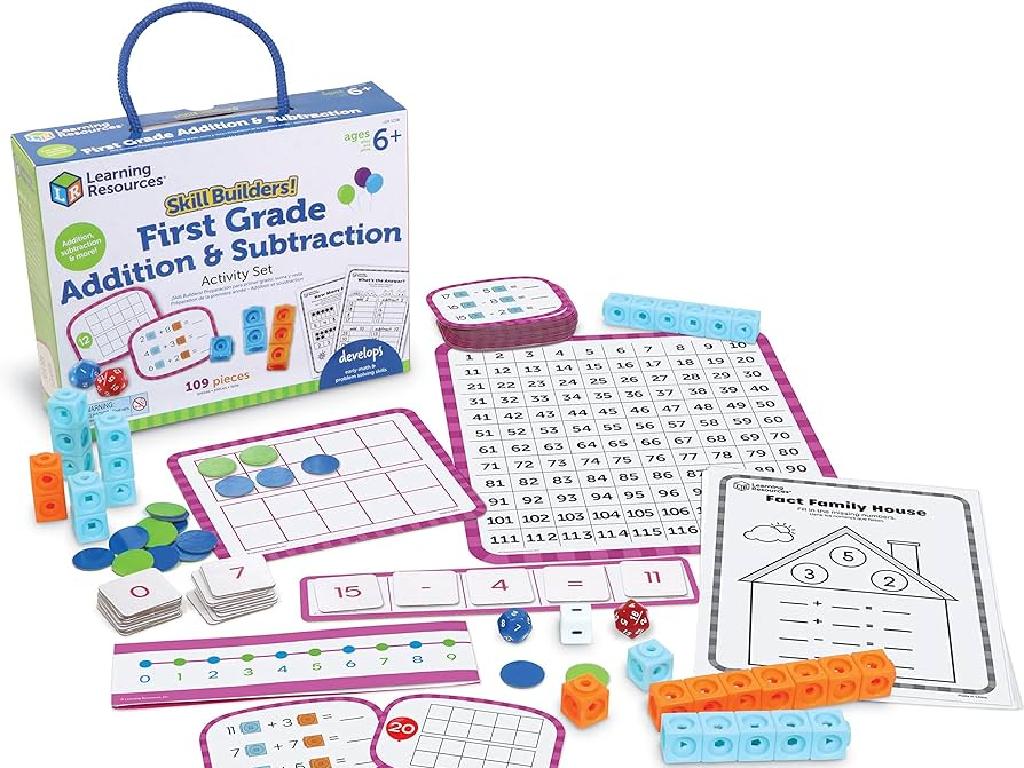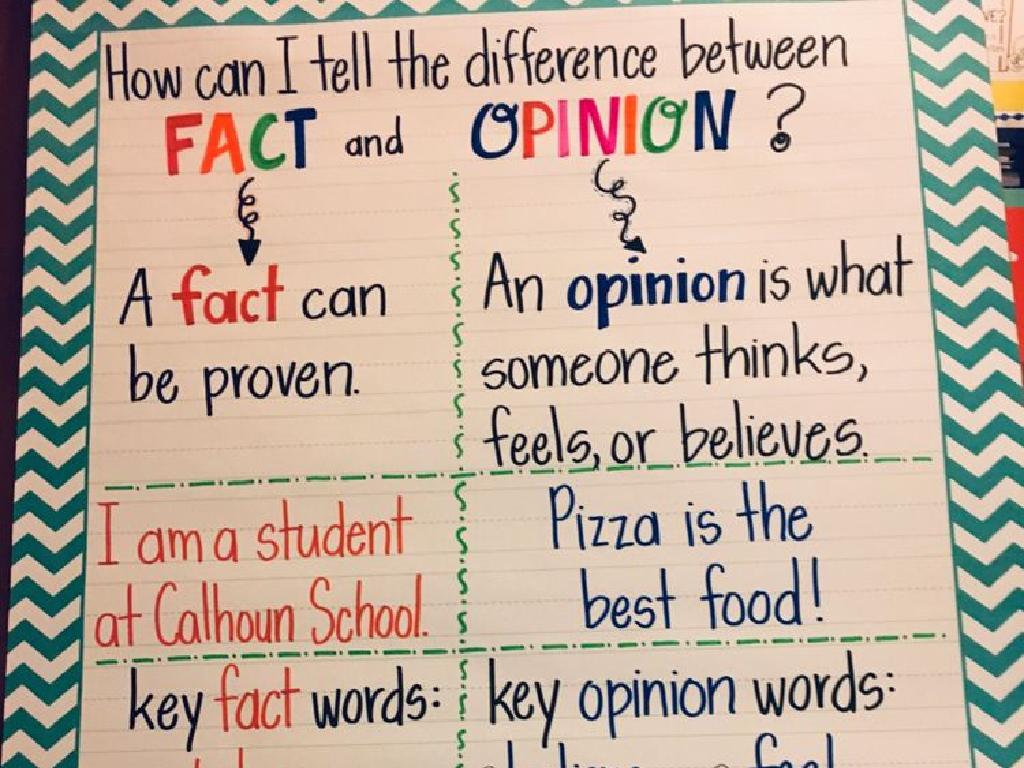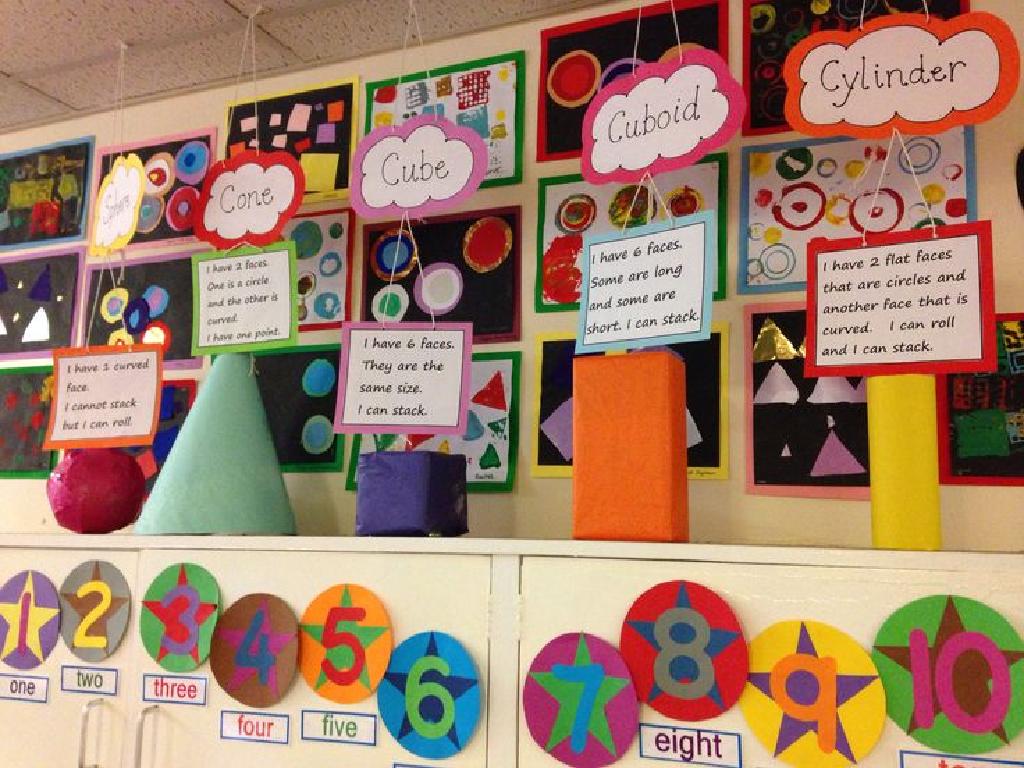Plant Cell Diagrams: Label Parts
Subject: Science
Grade: Fifth grade
Topic: Cells
Please LOG IN to download the presentation. Access is available to registered users only.
View More Content
Welcome to the World of Cells!
– Cells: Life’s building blocks
– Plant vs. Animal cells
– Plant cells have a cell wall and chloroplasts, unlike animal cells.
– Exploring Plant Cell Diagrams
– We’ll learn to identify and label the parts of a plant cell.
– Importance of each part
– Each part of a plant cell has a unique function that helps it live and grow.
|
Begin the class with a brief introduction to cells as the fundamental units of life. Highlight the differences between plant and animal cells, emphasizing the presence of a cell wall and chloroplasts in plant cells. Use a plant cell diagram to illustrate the various parts such as the nucleus, cell wall, cell membrane, chloroplasts, vacuole, and mitochondria. Explain that today’s lesson will focus on identifying and labeling these parts. Discuss the role of each part in the cell’s life, such as how chloroplasts are crucial for photosynthesis. Encourage students to ask questions and think about why each part is important for the cell’s overall function.
Exploring the Building Blocks of Life: Cells
– Cells: Basic unit of life
– Smallest form that can live and function
– Cells’ role in organisms
– They make up all living things and perform life processes
– Single vs. Multi-celled organisms
– Compare organisms like bacteria (single-celled) to humans (multi-celled)
|
This slide introduces the concept of cells as the fundamental unit of life. Begin by defining a cell and discussing its importance as the smallest form that can live and function independently. Explain how cells are the building blocks of all living organisms, from the simplest to the most complex. Highlight the difference between single-celled organisms, like bacteria, which consist of one cell, and multi-celled organisms, like humans and plants, which have many specialized cells working together. Use this opportunity to set the stage for understanding plant cell structure and function, which will be covered in subsequent slides.
Exploring Plant Cells
– Characteristics of plant cells
– Plant cells have a cell wall, chloroplasts, and a large vacuole.
– Uniqueness of plant cells
– They have unique features not found in animal cells, like a rigid cell wall.
– Photosynthesis process
– Photosynthesis uses sunlight to convert water and carbon dioxide into glucose.
– Plant cells’ food production
– Unlike animals, plant cells produce their own food through photosynthesis.
|
This slide introduces students to the fundamental aspects of plant cells, highlighting their characteristics, what makes them unique, and how they are able to produce their own food through photosynthesis. Emphasize the presence of the cell wall, chloroplasts, and large vacuoles as key features that distinguish plant cells from animal cells. Explain the process of photosynthesis in simple terms, illustrating how plants use sunlight to create glucose from water and carbon dioxide. This process is crucial for the survival of the plant and provides energy for growth and development. Encourage students to think about the importance of plants in providing oxygen and food for other organisms.
Exploring Plant Cell Parts
– Cell Wall: Protective layer
– Like a strong wall around a castle, it guards the cell.
– Cell Membrane: Cell’s gatekeeper
– It’s like a door that decides what enters or leaves the cell.
– Chloroplasts: Photosynthesis site
– These are where the plant uses sunlight to make food.
– Vacuole: Cell’s storage center
– A large space that stores water, food, and wastes.
|
This slide introduces the basic parts of a plant cell to fifth-grade students. The cell wall is described as a protective layer, much like a castle wall, which provides structure and protection. The cell membrane is likened to a gatekeeper, controlling what substances can enter and exit the cell. Chloroplasts are explained as the location where photosynthesis occurs, allowing the plant to convert sunlight into energy. Lastly, the vacuole is introduced as the storage center, holding essential materials like water, nutrients, and waste. Encourage students to think of the cell as a little factory, with each part playing a specific role in keeping the plant alive and healthy. Use diagrams to visually represent each part and provide real-life analogies to help students relate to the functions of each cell component.
Labeling the Plant Cell
– Identify cell parts
– Locate and label parts like the nucleus, chloroplasts, and cell wall.
– Functions of cell parts
– Each part has a role, e.g., chloroplasts for photosynthesis.
– Synergy of cell components
– Cell parts work in harmony, like organs in a body.
– Keeping the plant alive
|
This slide aims to help students understand the structure and function of plant cells. They should be able to identify and label the various parts of a plant cell, such as the nucleus, cell wall, cell membrane, chloroplasts, vacuoles, and mitochondria. Discuss the role each part plays, like how chloroplasts are crucial for photosynthesis, which is the process plants use to convert light energy into chemical energy. Emphasize the importance of each component working together to maintain the cell’s health and support the plant’s life. Activities can include creating a labeled diagram of a plant cell and discussing how these parts contribute to the plant’s growth and survival.
Plant Cell vs. Animal Cell
– Similarities in cells
– Both have a nucleus, cytoplasm, and mitochondria.
– Key differences explained
– Plant cells have chloroplasts and cell walls, unlike animal cells.
– Chloroplasts’ role in plants
– Chloroplasts enable photosynthesis, producing food for the plant.
– Significance of cell walls
– Cell walls provide structure and protection for plant cells.
|
This slide aims to highlight the similarities and differences between plant and animal cells, which are both eukaryotic cells containing a nucleus and organelles. Emphasize that while they share many common features, plant cells have unique structures such as chloroplasts, which are critical for photosynthesis and are not found in animal cells. Additionally, plant cells have rigid cell walls that support and protect the cell, contributing to the plant’s overall structure. Understanding these differences is crucial for students as it lays the foundation for comprehending how plants are able to produce their own food and maintain their structure. Encourage students to think about how these differences affect the way plants and animals live and grow.
Class Activity: Create Your Own Plant Cell Model
– Gather materials for cell model
– You’ll need clay, paint, and labels
– Follow steps to build cell model
– Shape the clay into a cell, paint different parts
– Label each part of your cell
– Use the labels for parts like nucleus, chloroplasts
– Discuss the function of each part
– Why is the nucleus important? What do chloroplasts do?
|
This activity is designed to help students understand the structure of plant cells by creating a hands-on model. Provide students with modeling clay, paint, and labels to construct their cell. Guide them through the steps to shape their model to represent a plant cell and use different colors to distinguish between the various parts such as the cell wall, nucleus, chloroplasts, and vacuoles. Once the model is complete, students will label each part and discuss its function in the cell. This will reinforce their understanding of plant cell anatomy and the role each component plays in the life of a plant. Possible variations of the activity could include using different materials like gelatin or food items to represent parts of the cell, or creating a larger class model for a collaborative learning experience.
Plant Cell Diagram Review & Questions
– Recap of today’s main points
– Open floor for questions
– Discuss real-life applications
– How plant cell functions relate to everyday plant life
– Encourage curiosity and understanding
– Understanding cells helps us grasp how plants grow and thrive
|
This slide aims to consolidate the knowledge students have gained about plant cell diagrams and their components. Begin with a brief recap of the parts of a plant cell and their functions. Encourage students to ask questions or for clarifications on any part of the lesson they might not have fully understood. Discuss the real-life applications of understanding plant cells, such as the importance in fields like botany, agriculture, and environmental science. Emphasize how this knowledge helps us understand the growth and health of plants, which is crucial for food production and ecosystem balance. Foster a sense of curiosity and understanding about the microscopic world of cells and how it connects to the larger world they interact with daily.
Homework: Exploring Plant Cells
– Complete cell labeling worksheet
– Discover an interesting plant cell fact
– Maybe how chloroplasts help in photosynthesis?
– Bring your cell model to class
|
This homework assignment is designed to reinforce the students’ understanding of plant cell structure and function. The worksheet will help them identify and label the different parts of a plant cell, such as the cell wall, nucleus, and chloroplasts. Encourage students to go beyond the worksheet and find a unique or fun fact about plant cells that they can share with the class; this could be related to the cell’s energy production, how it contributes to the plant’s growth, or its role in the environment. Lastly, remind students to bring their plant cell models to the next class. These models will serve as a hands-on tool to help them better understand the cell’s components and will also provide an opportunity for a show-and-tell presentation, fostering public speaking skills and peer learning.






